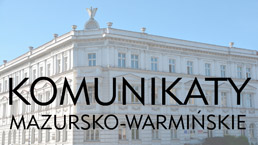Current issue
Online first
Special issues
Archive
About the Journal
Editorial Board
Editorial Council
Reviewers
Editorial guidelines
Publication ethics
Guidelines for reviewing
Remarks on “ghostwriting”
Copyrights and Open Access rule
GDPR Privacy Notice – for the authors of articles sent for publication in the "Komunikaty Mazursko-Warmińskie ("Masuro-Warmian Bulletin")
Contact
Price list
Brandenburg-Prussian raid on Stoczek Klasztorny (Warmiński) in 1732
1
Instytut Północny im. W. Kętrzyńskiego w Olsztynie
2
Towarzystwo Naukowe im. W. Kętrzyńskiego w Olsztynie
Online publication date: 2021-06-16
Publication date: 2021-06-16
KMW 2021;311(1):19-33
KEYWORDS
TOPICS
ABSTRACT
After 1657, the conflict between Warmia and Ducal Prussia gradually escalated. The disputes
concerned fugitive subjects, trade, prices of goods, and the border in the Vistula Lagoon. When the Prince-elector of Brandenburg, Frederick William II, became the King of Prussia, the conflicts intensified, with Brandenburg Prussia acting as provocateurs. The Warmian border areas
became the subject of constant military interventions of the Brandenburg army. Tall people
were kidnapped and drafted into the army, deserters were pursued. The inhabitants of the area
were living in continuous fear. Night watch was unsuccessful. Diplomatic interventions of Polish royal court in Berlin were equally futile. The most notorious event of that time was the
raid of Brandenburg troops on the Monastery in Stoczek Klasztorny and the abduction of two
monks. The raid was an open military violation of the borders of Warmian dominion. Although
the monks were later released by the Prussian authorities, the skirmish increased the fear the
Warmian inhabitants had already felt for the Brandenburg soldiers
REFERENCES (14)
1.
Achremczyk Stanisław, Emigranci polscy w Królewcu w XVIII wieku, Studia Warmińskie, 1995, t. 32.
2.
Achremczyk Stanisław, Suwerenność zagrożona. Warmia i Prusy Książęce w drugiej połowie XVII wieku, w: Między Barokiem a Oświeceniem. Apogeum sarmatyzmu. Kultura polska drugiej połowy XVII wieku, red. S. Achremczyk,
K. Stasiewicz, Olsztyn 1997.
3.
Birch-Hirschfeld Adolf, Geschichte des Kollegiatstiftes in Guttstadt 1342–1811, ZGAE, 1932, Bd. 24.
5.
Birch-Hirschfeld Adolf, Ein und Auswanderung zwischen Ermland und Herzogtum Preussen im 16. Und 17 Jahrhundert, ZGAE,1935, Bd. 25
6.
Birch-Hirschfeld Adolf, Gottfried Heinrich Freiherr von Eulenburg, Konvertit und ermlaendischer Domherr 1670–1734, ZGAE,1935, Bd. 26.
7.
Diariusz wizytacji kościoła w Królewcu w 1727 roku dokonanej przez biskupa Krzysztofa Jana Szembeka, oprac. B. Babirecka, „Nasza Przeszłość” 1965, t. 66.
8.
Boenigk Andrzej, Kloster Springborn des Ermlandes Friedens Tempel, Braunsberg 1917.
10.
Hipler Franz, Gottfried Heinrich Freiherr von Eulenburg, Pastoralblatt fur die Dioezese Ermland, 1892.
11.
Janiszewska-Mincer Barbara, Emigracja Polaków i Litwinów do Prus w latach 1702–1745, w: Między Lwowem a Wrocławiem. Księga jubileuszowa Profesora Krystyna Matwijowskiego, red. B. Rok, J. Maroń, Toruń 2006.
12.
Lehmann Max, Preussen und die Katholische Kirche seit 1640, Bd. 1, Leipzig 1878, Nr. 843, 844, 855, 864.
14.
Mielcarczyk Georg, Beiträge zur Geschichte der Dörfer Alt- und Neu-Passarger, Unsere Ermlandische Heimat, 1964,
Nr. 1.2.
Share
RELATED ARTICLE
We process personal data collected when visiting the website. The function of obtaining information about users and their behavior is carried out by voluntarily entered information in forms and saving cookies in end devices. Data, including cookies, are used to provide services, improve the user experience and to analyze the traffic in accordance with the Privacy policy. Data are also collected and processed by Google Analytics tool (more).
You can change cookies settings in your browser. Restricted use of cookies in the browser configuration may affect some functionalities of the website.
You can change cookies settings in your browser. Restricted use of cookies in the browser configuration may affect some functionalities of the website.




